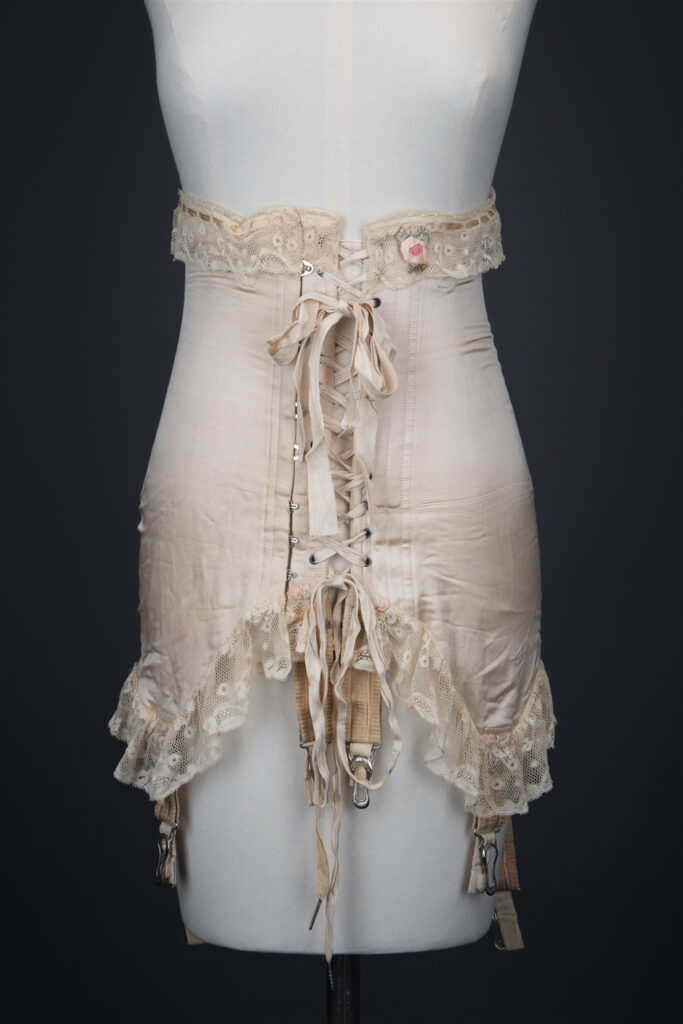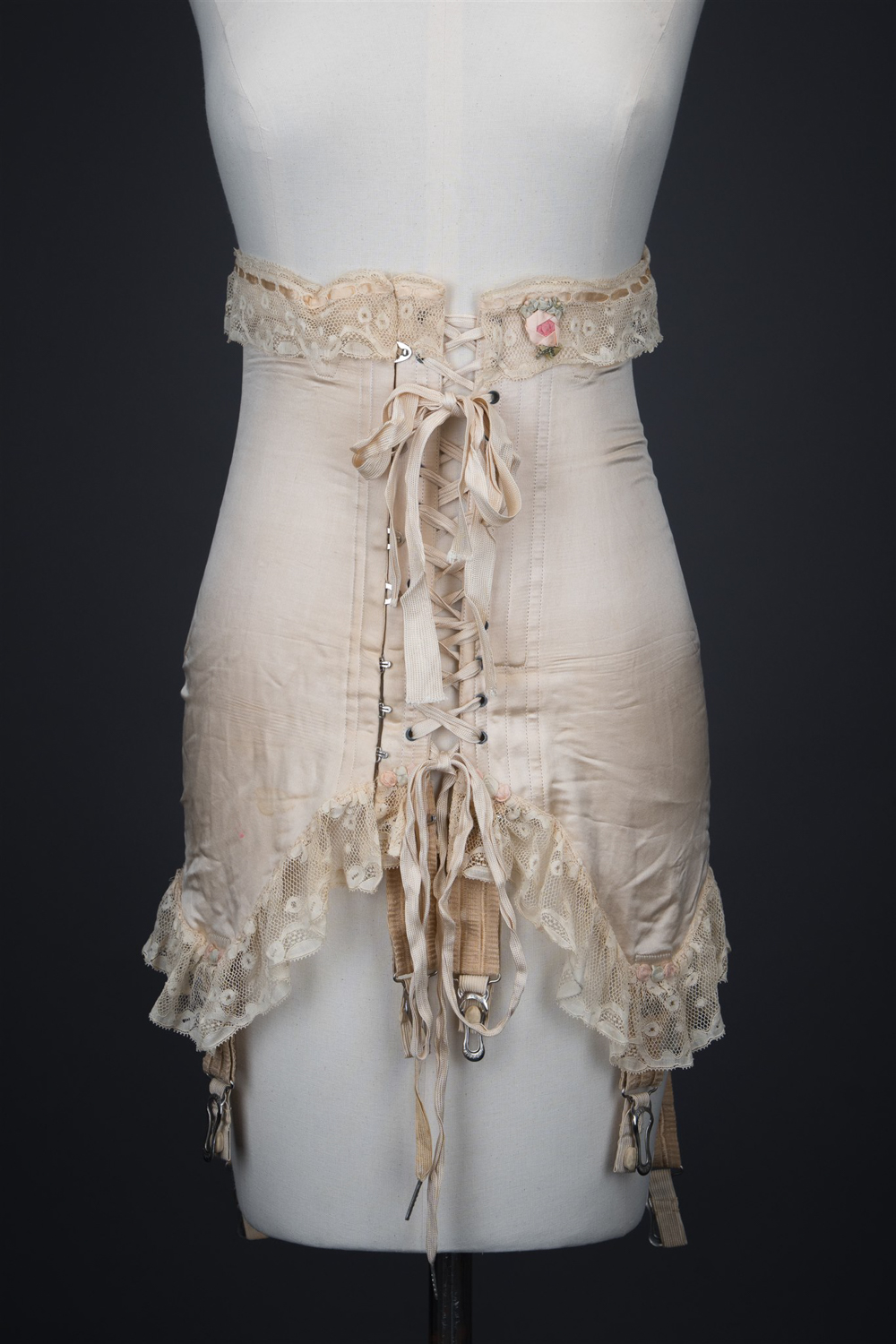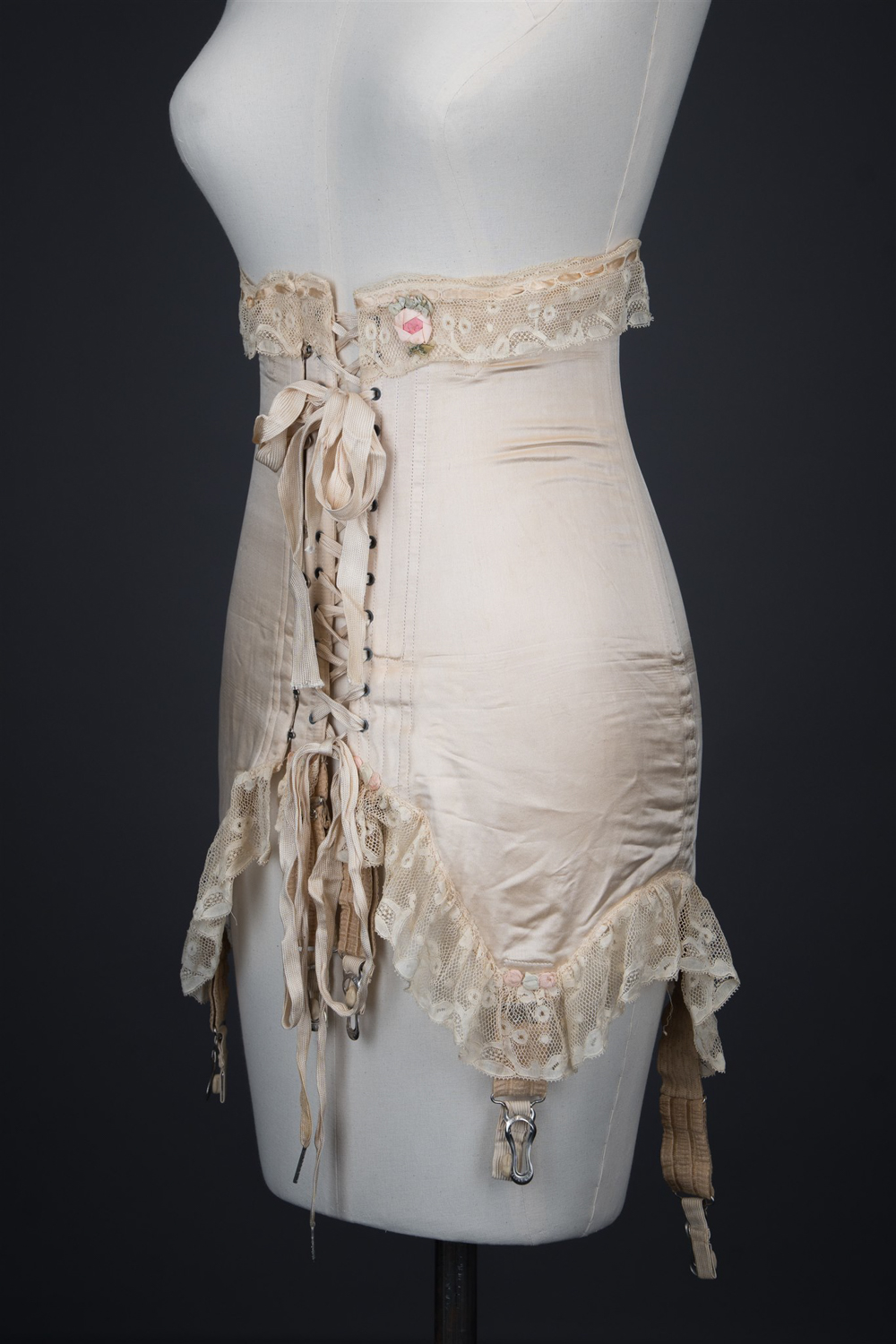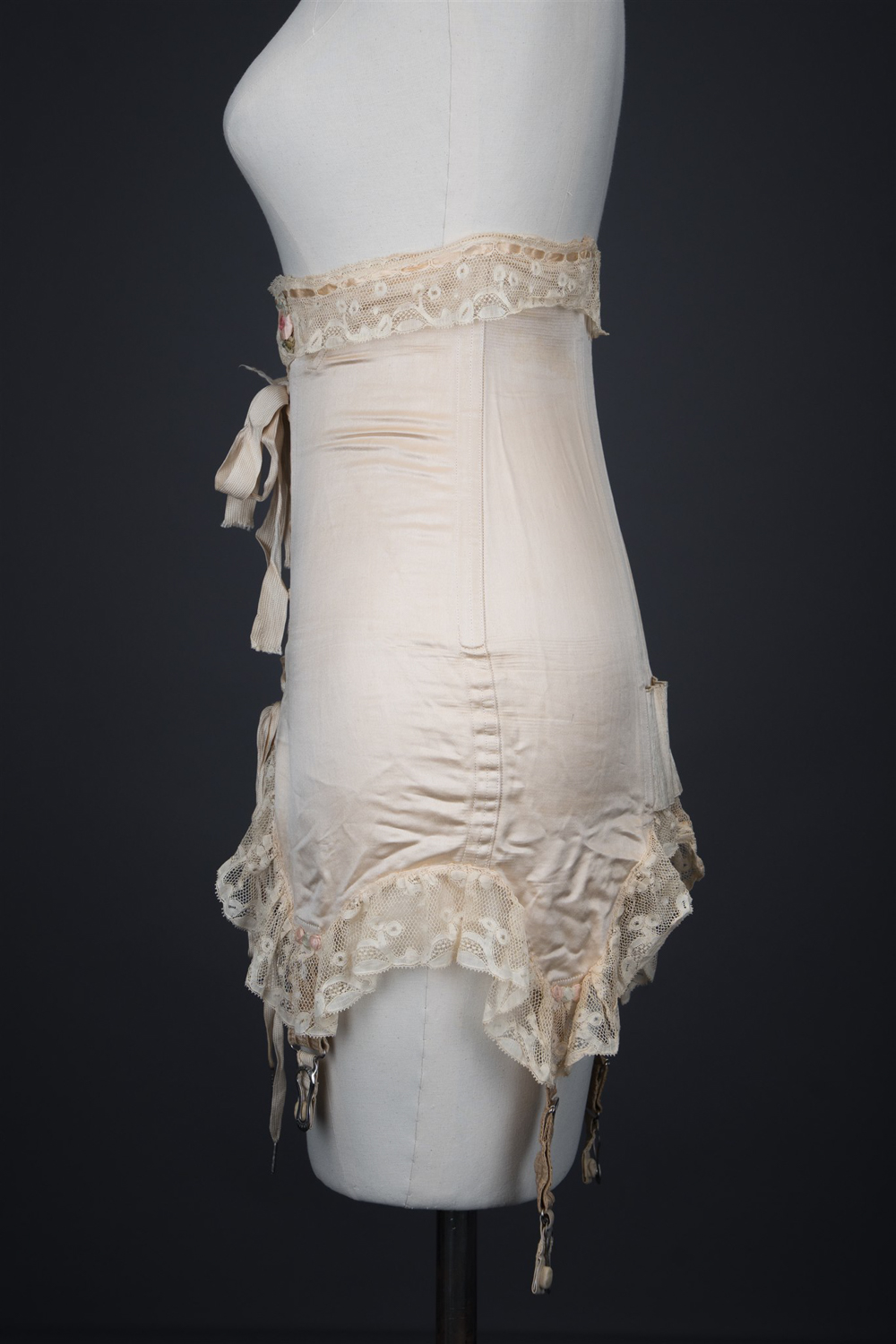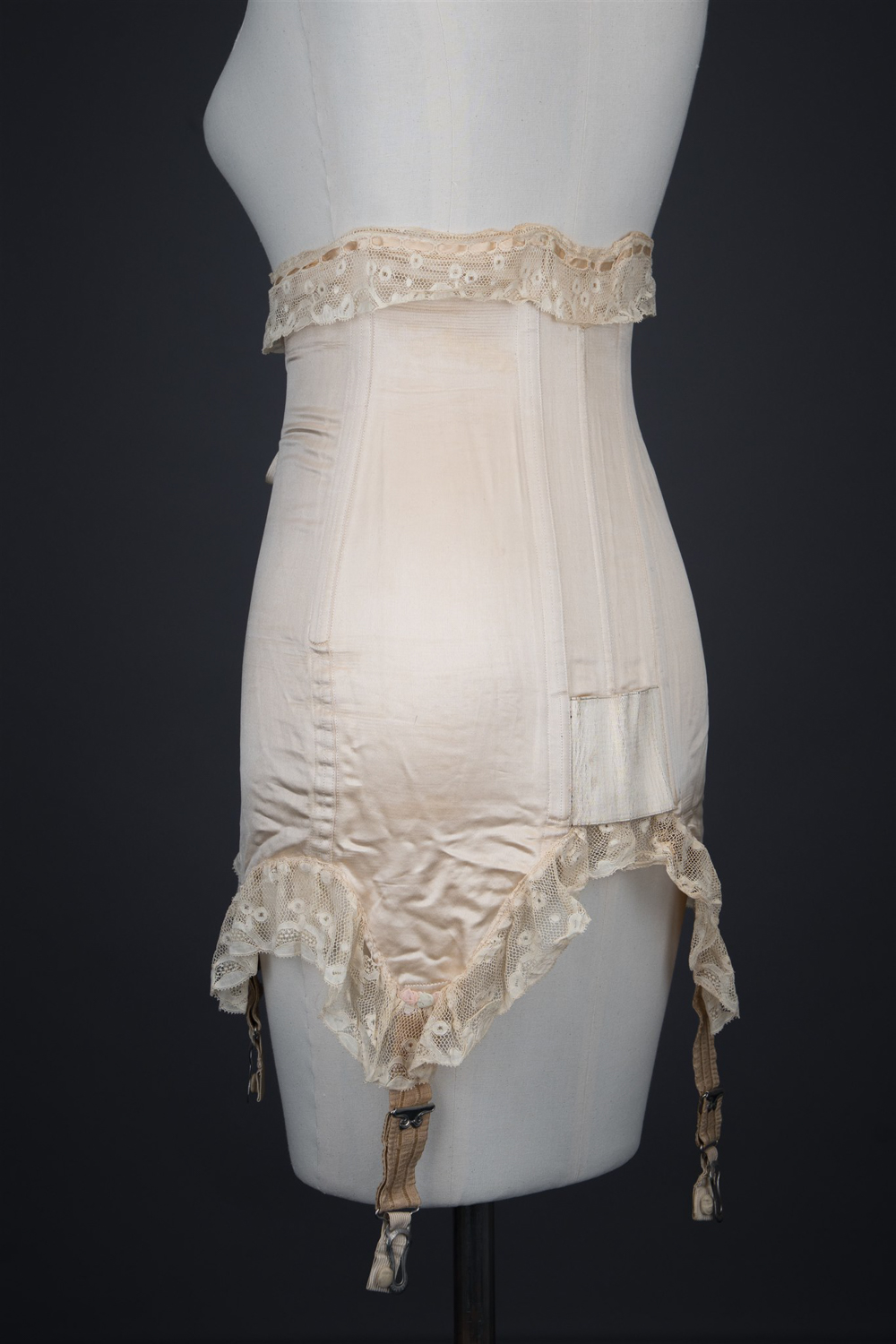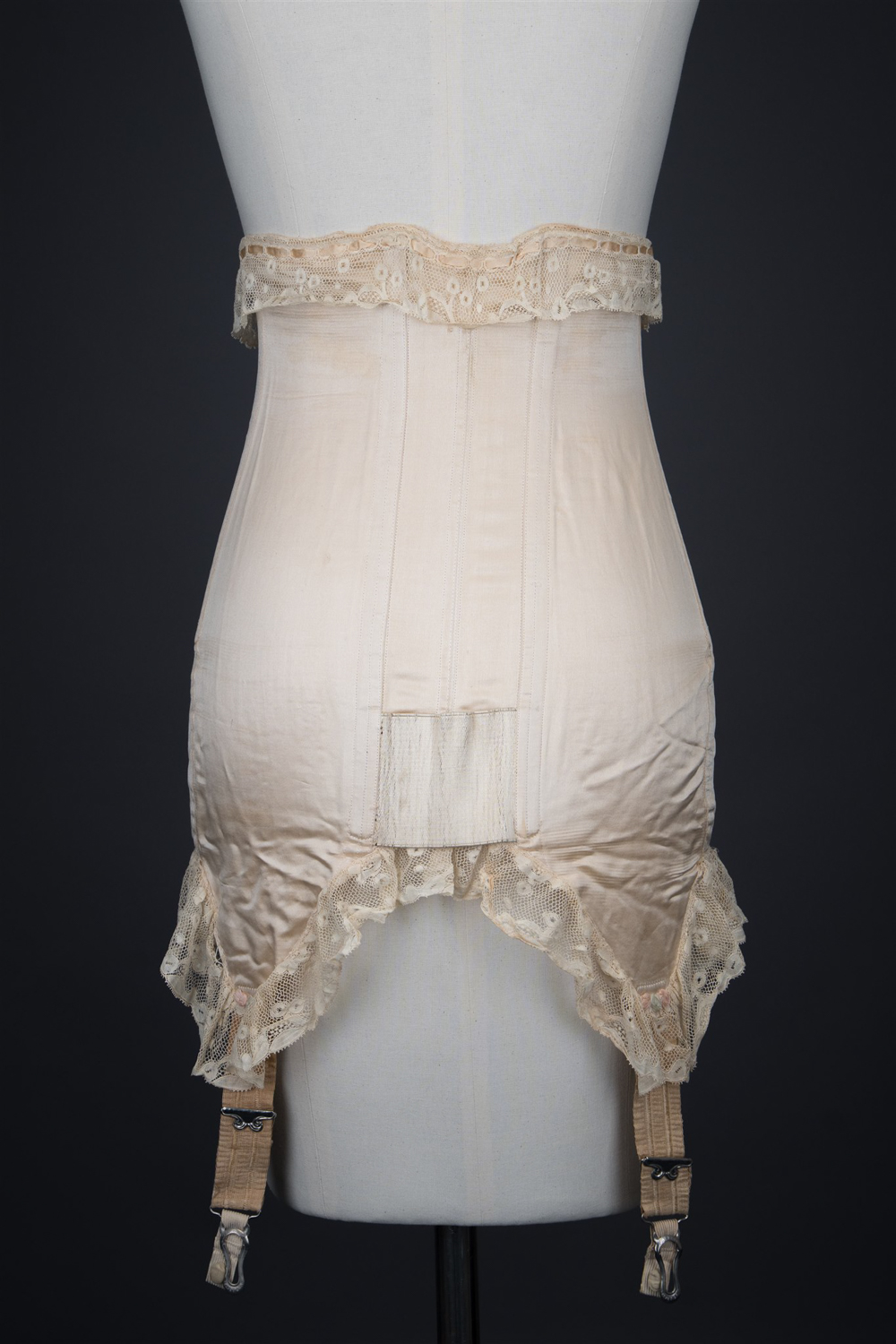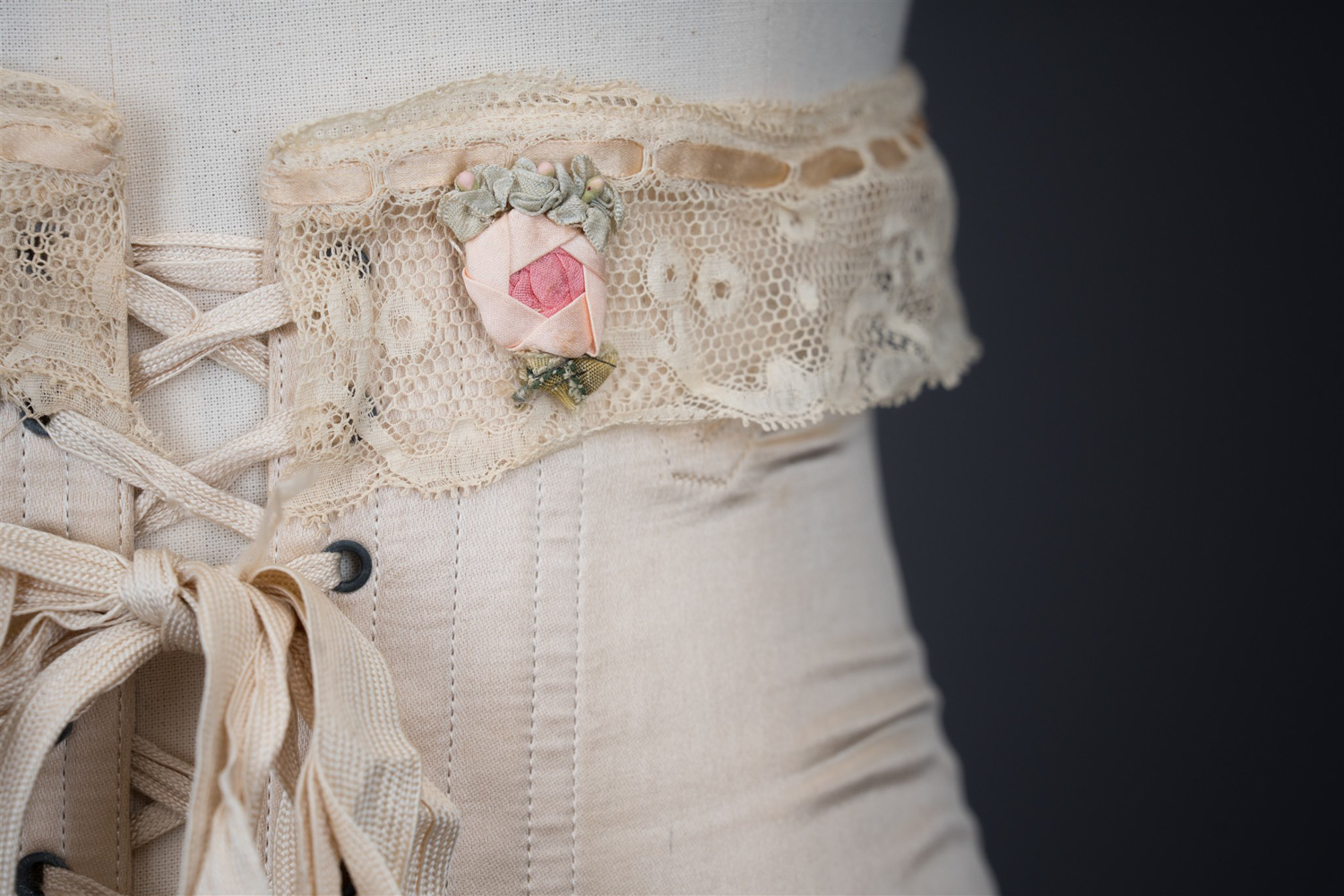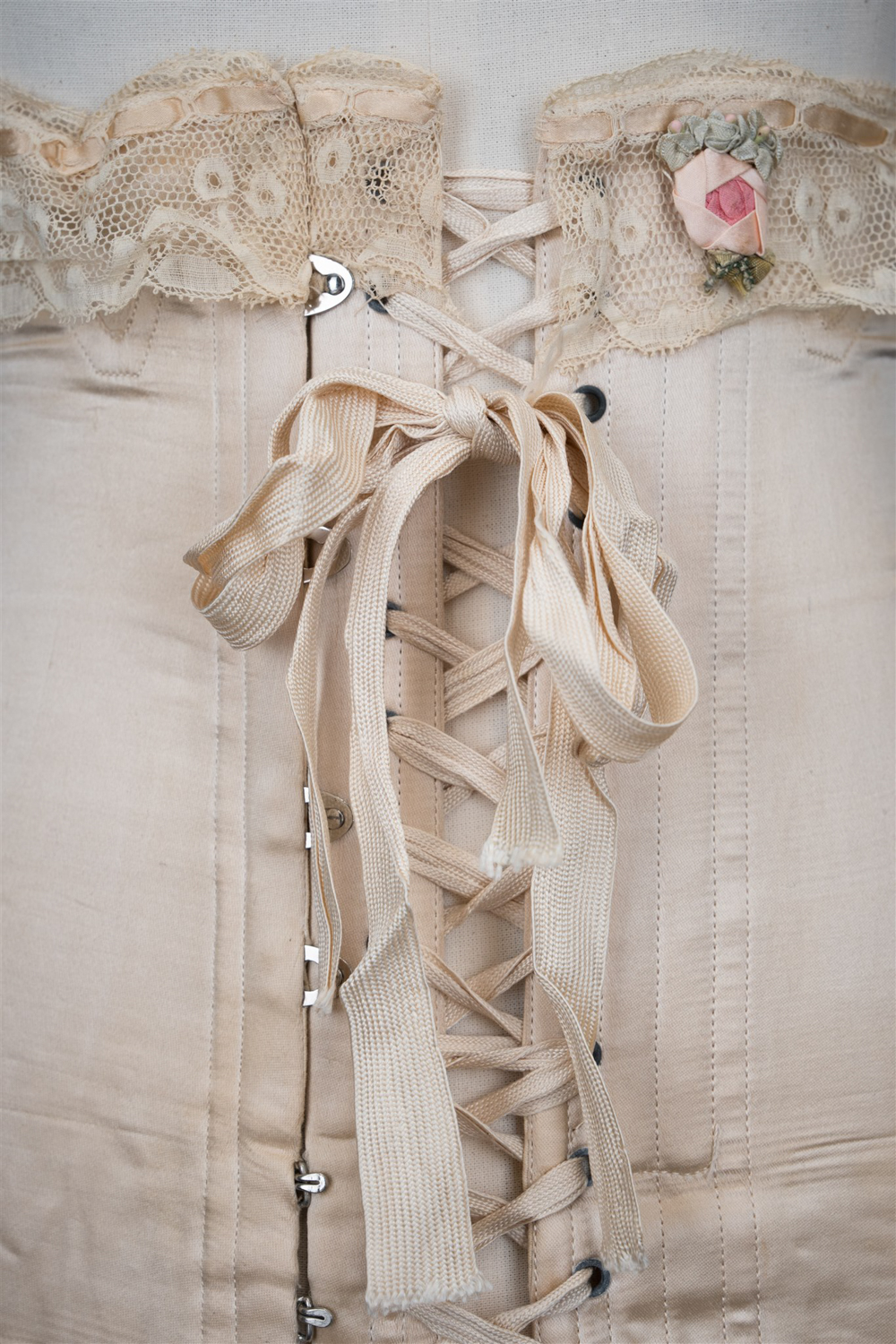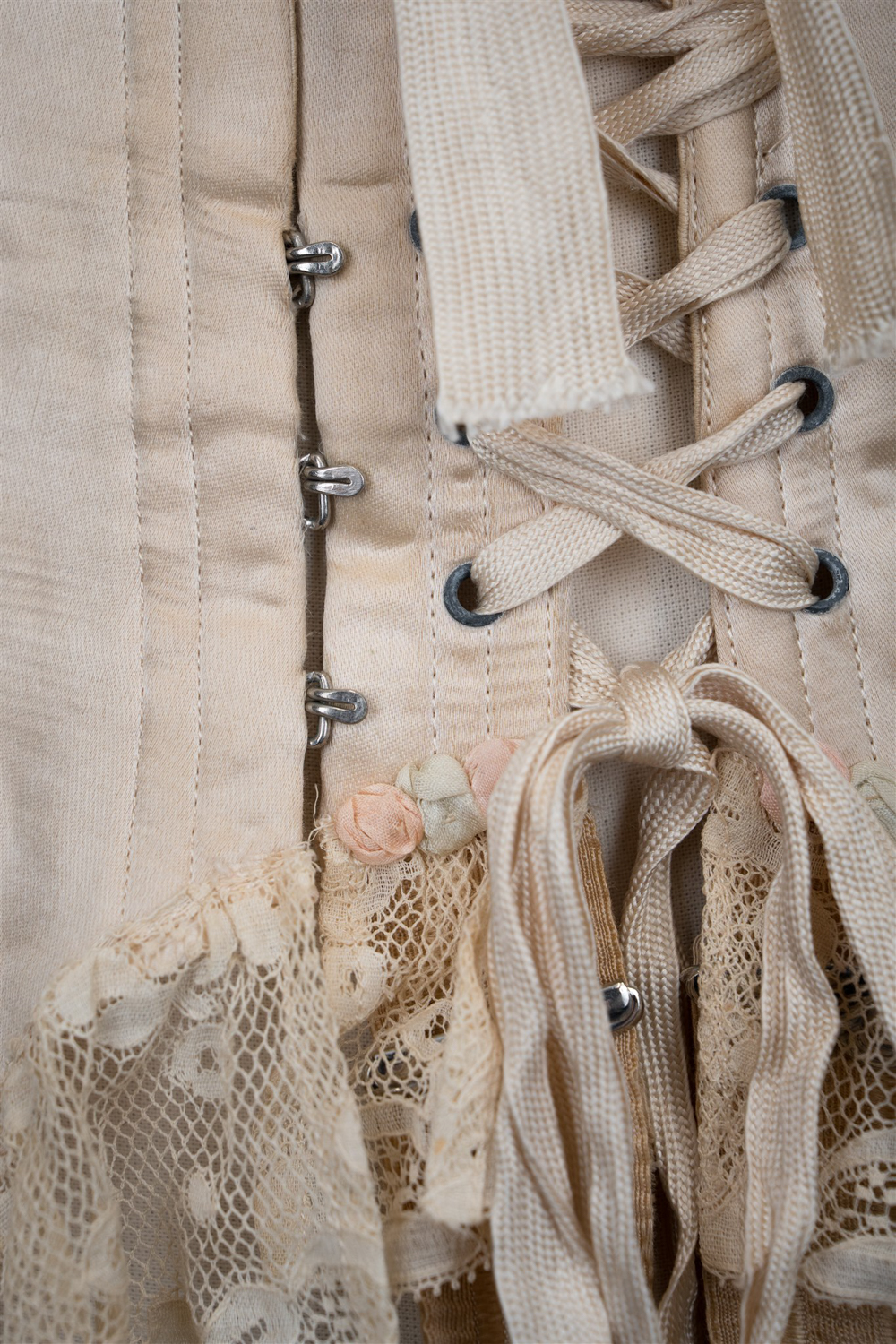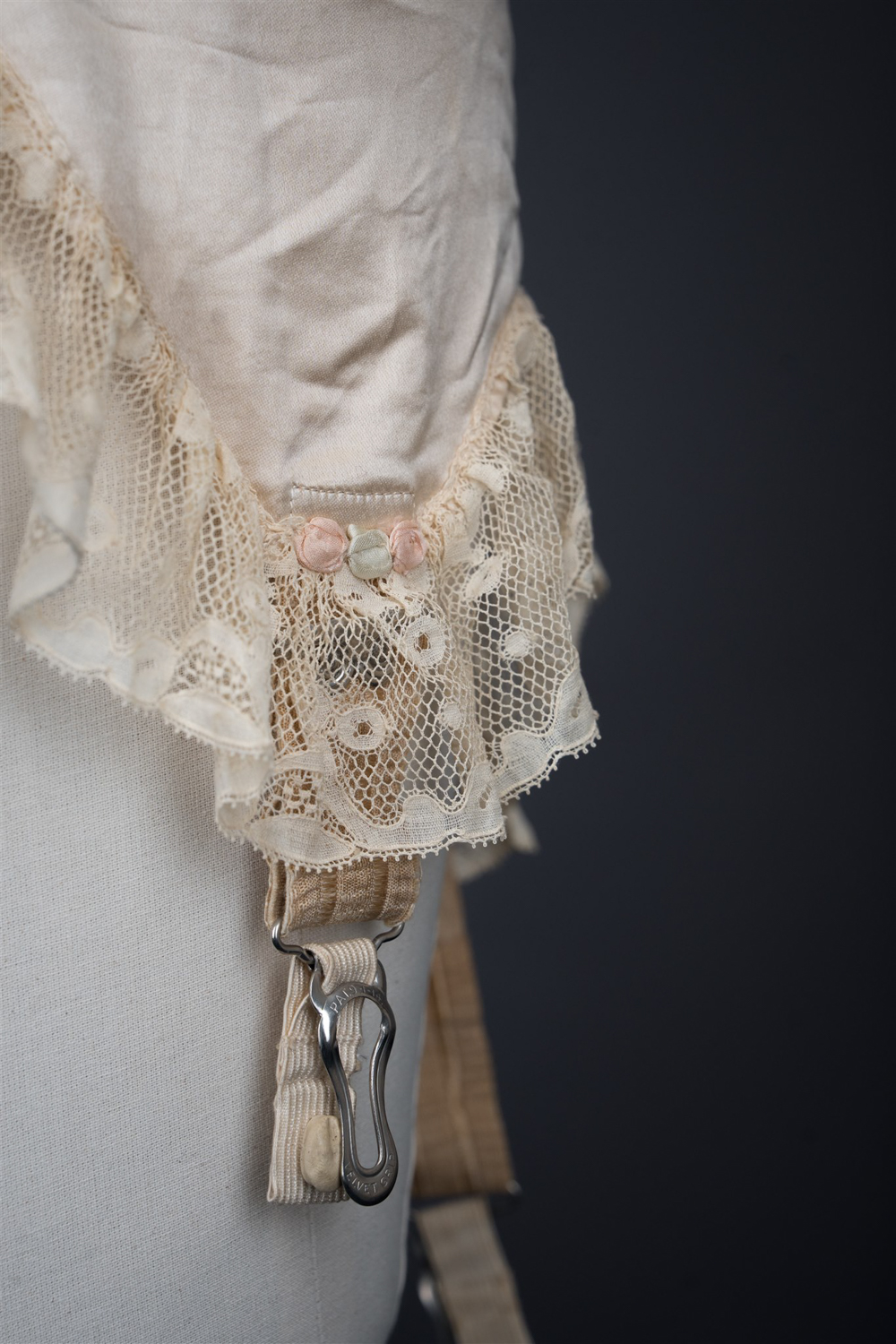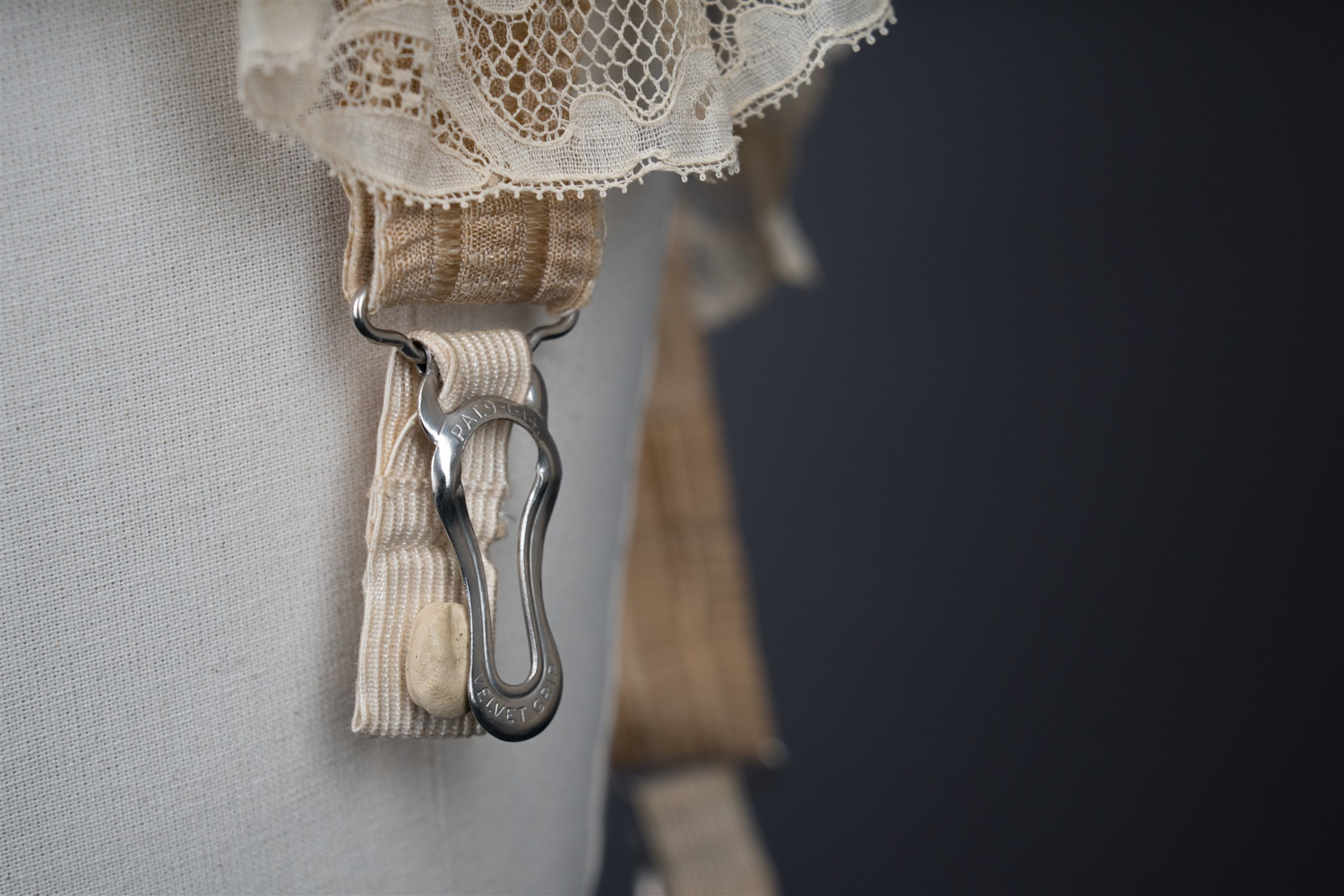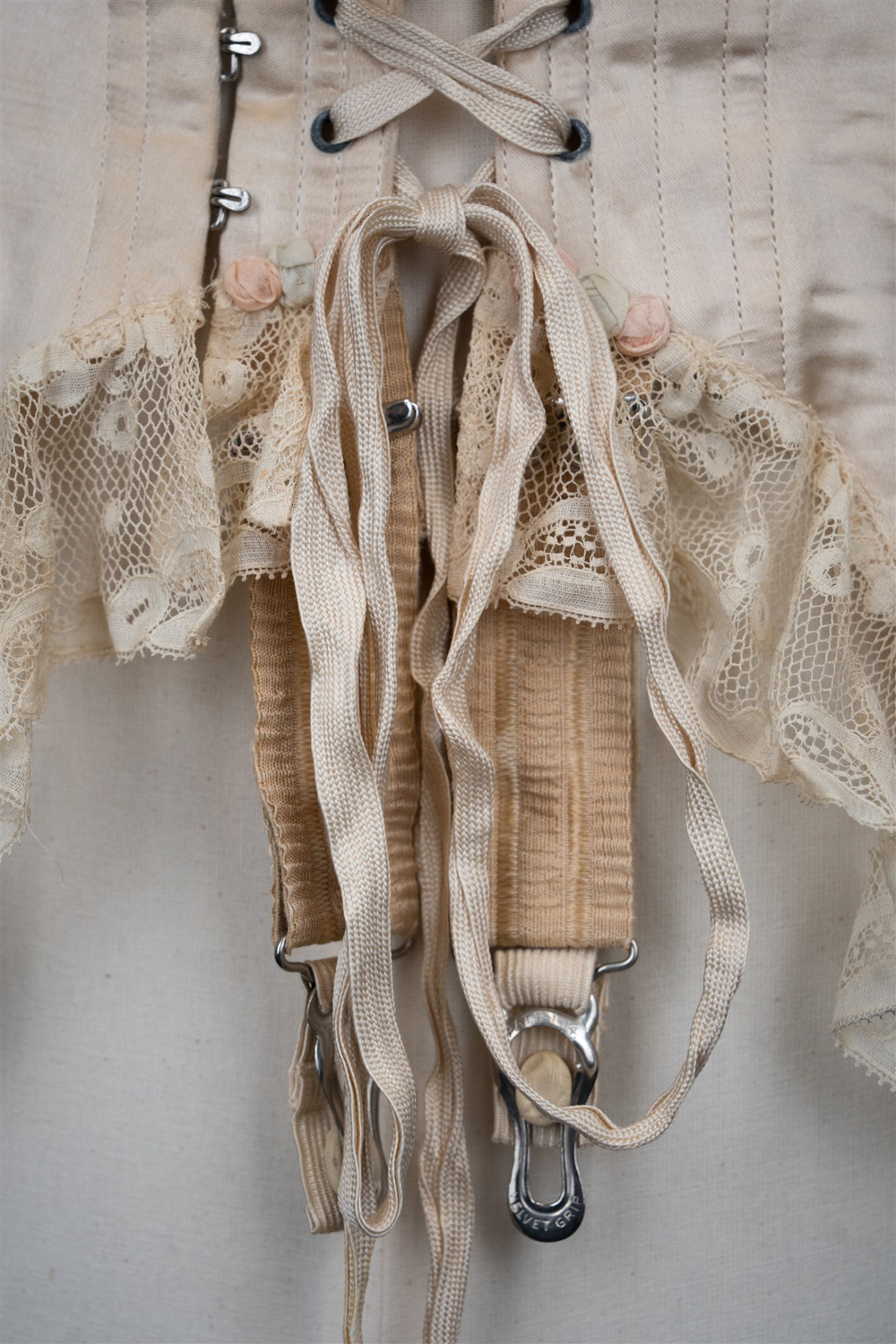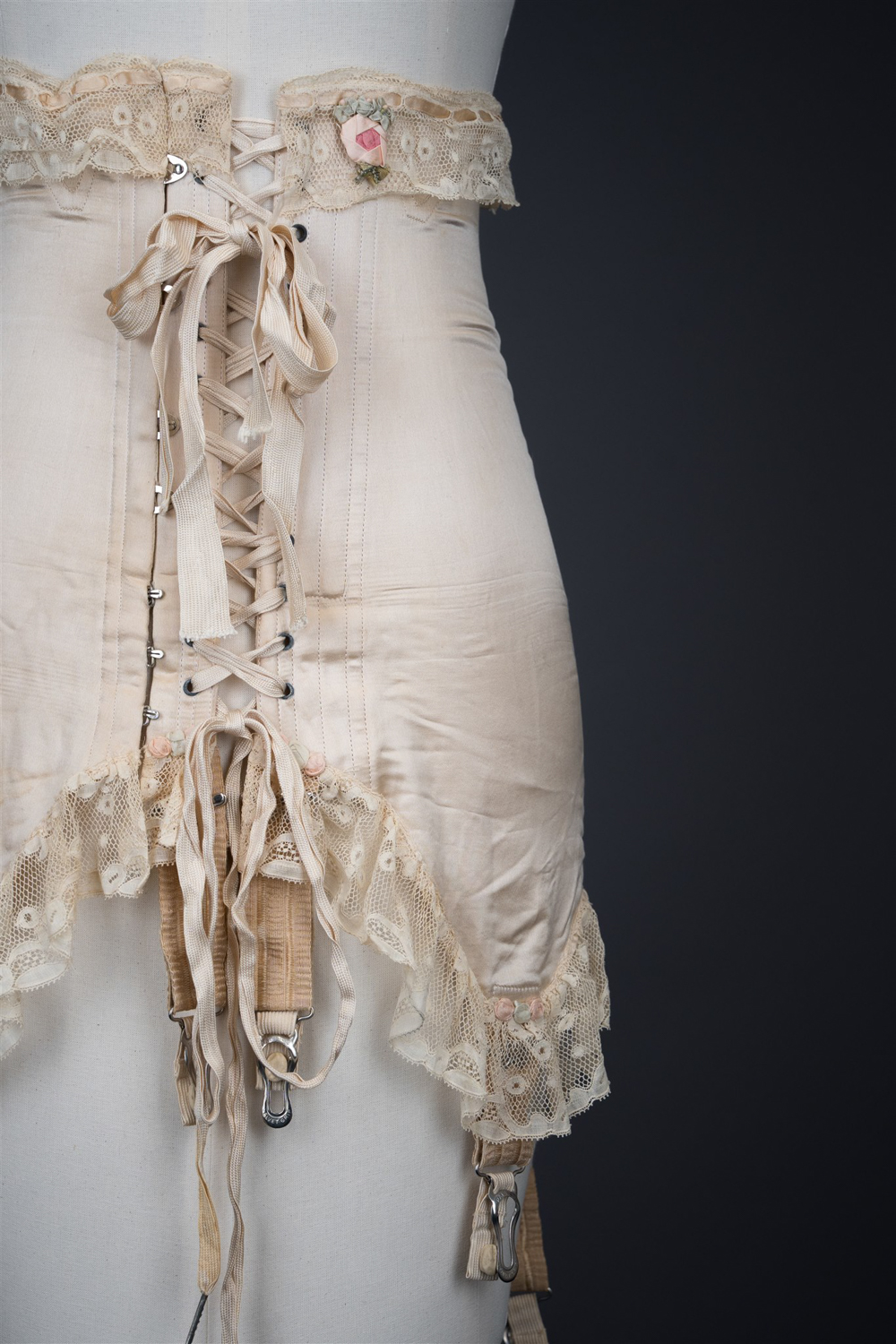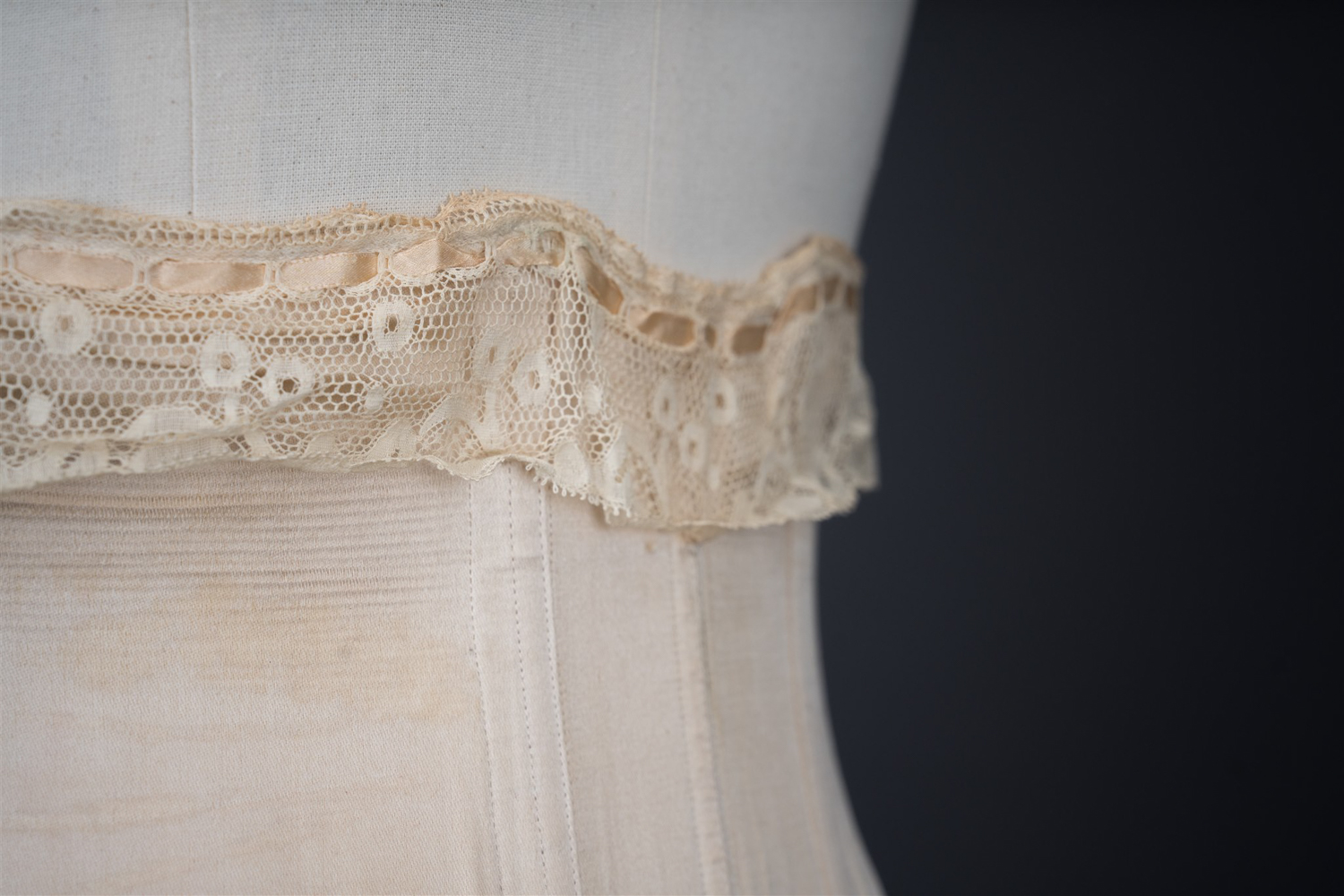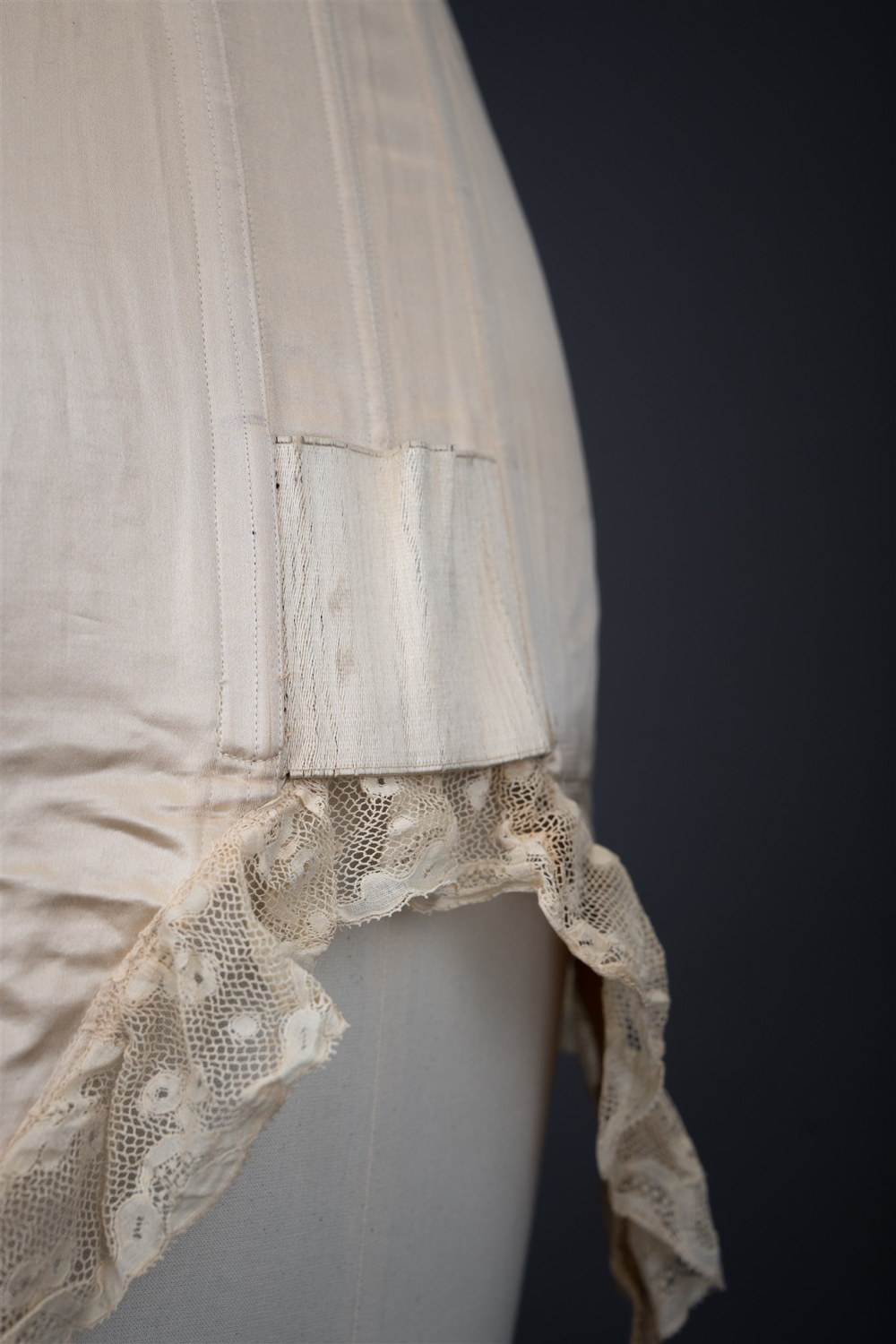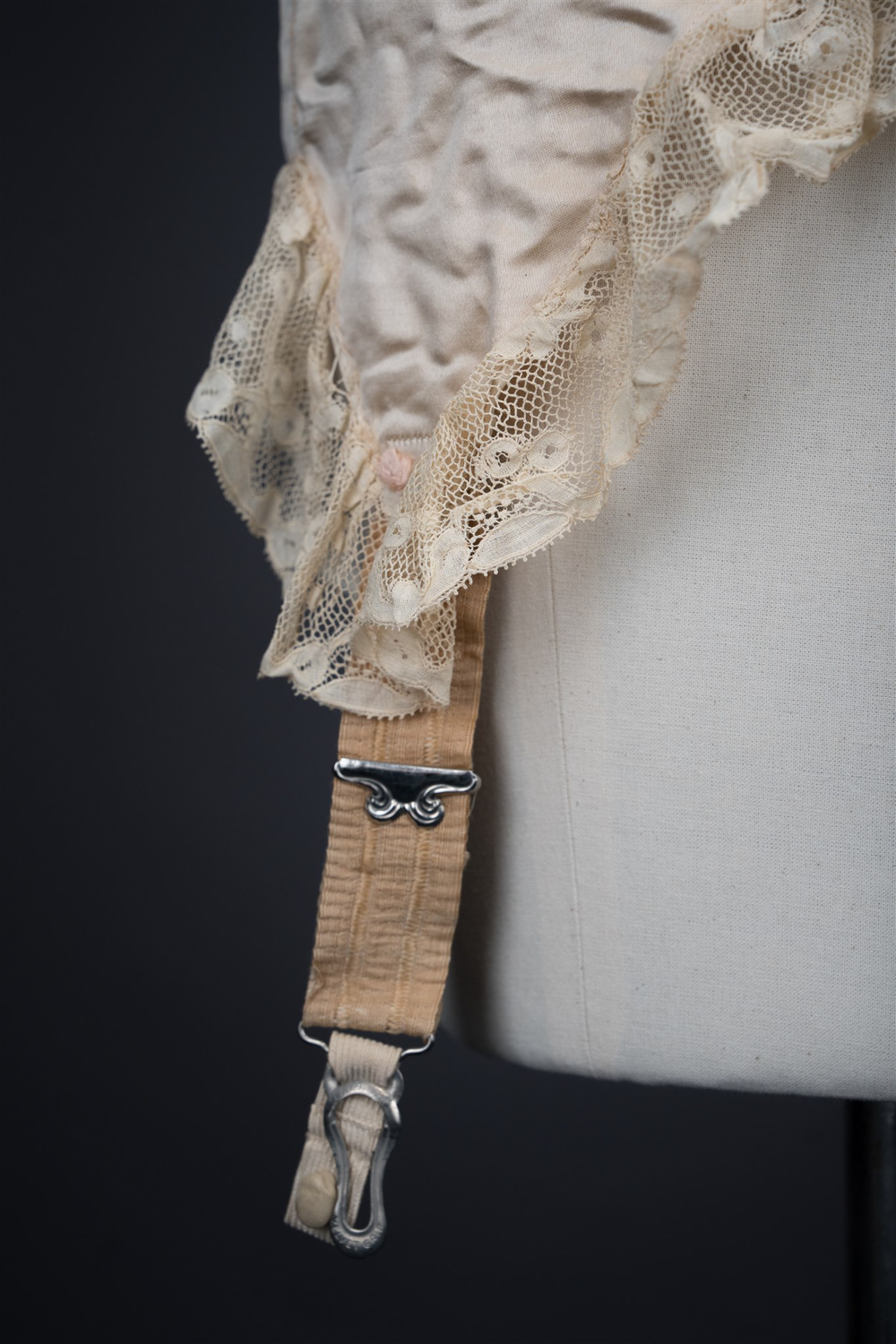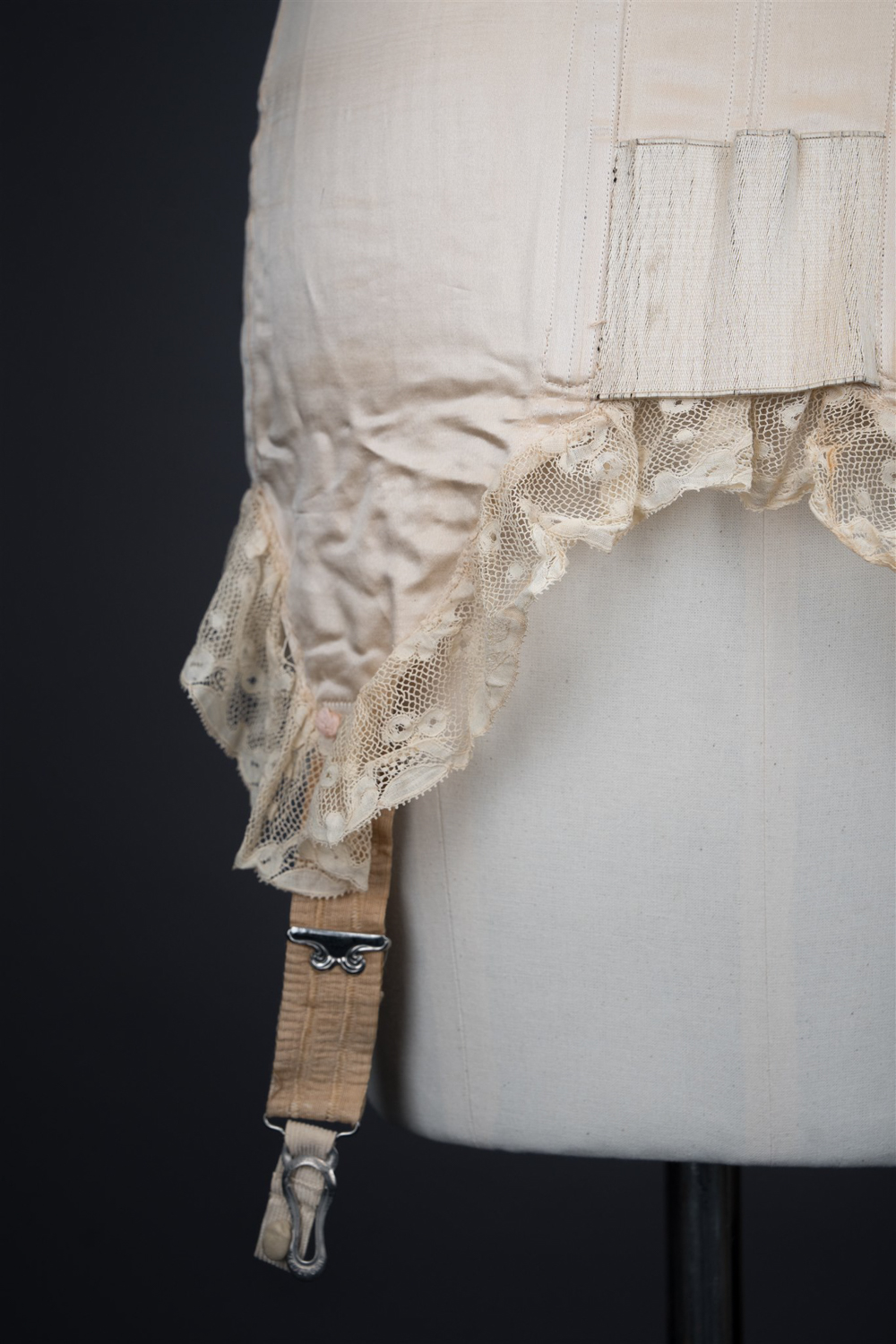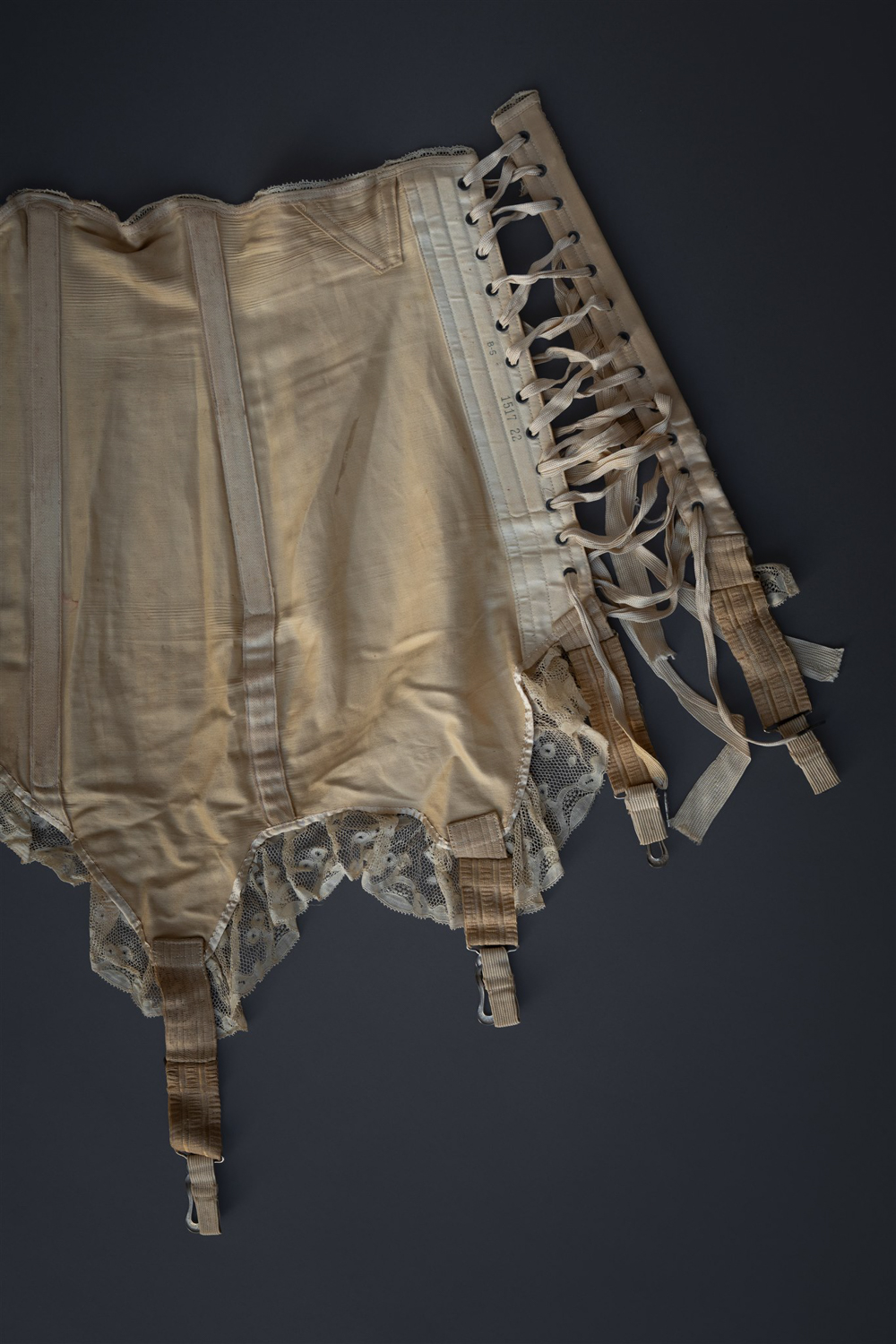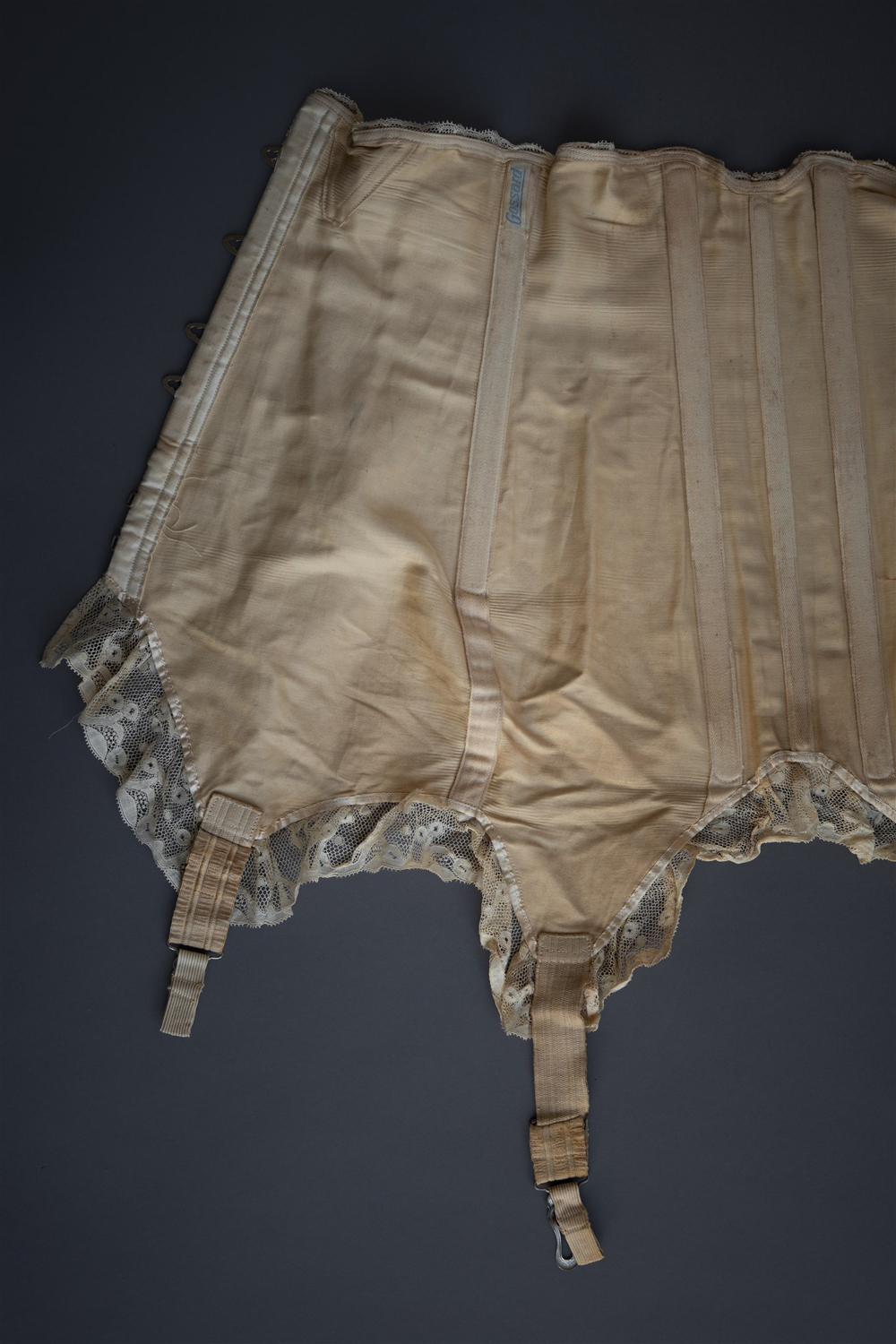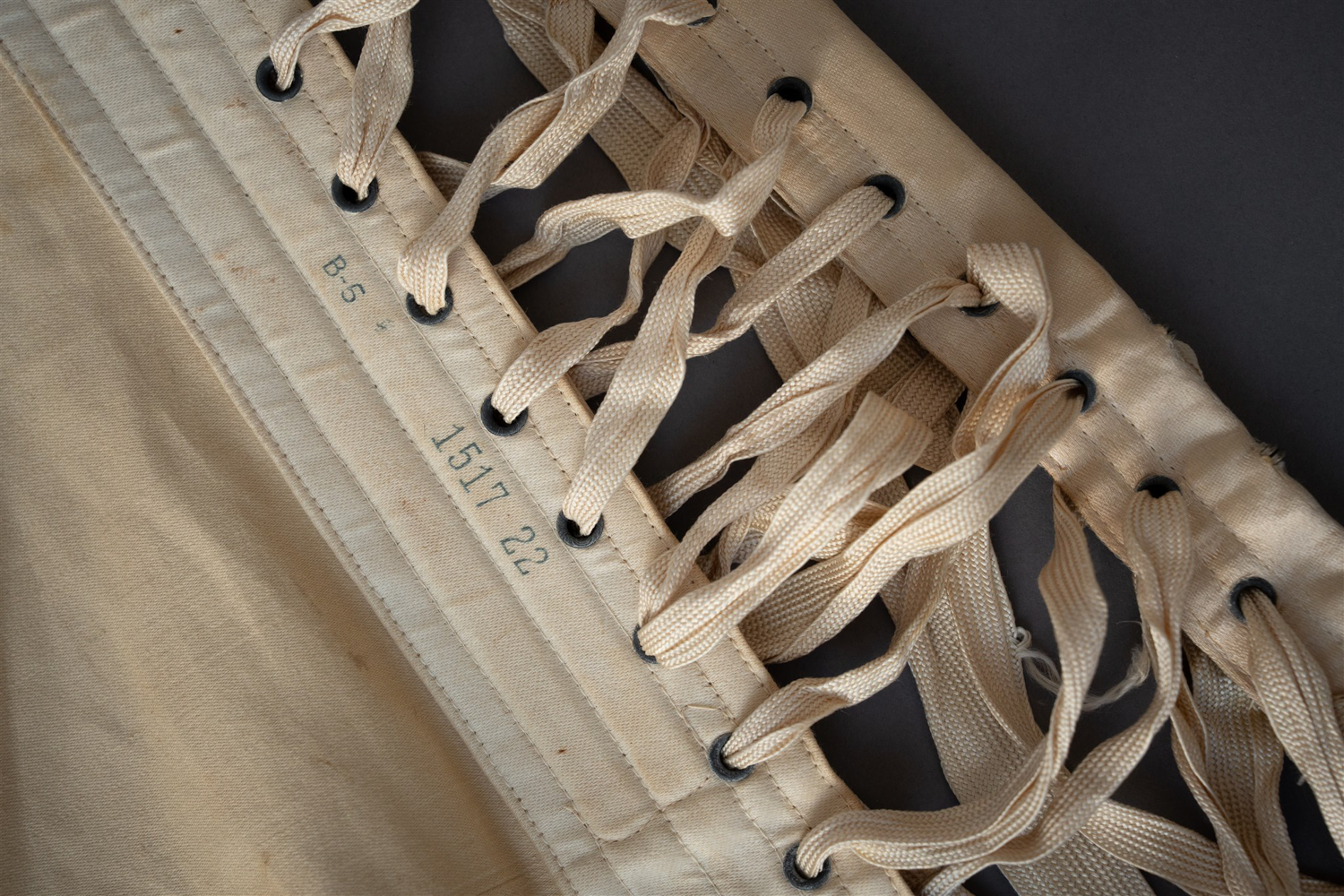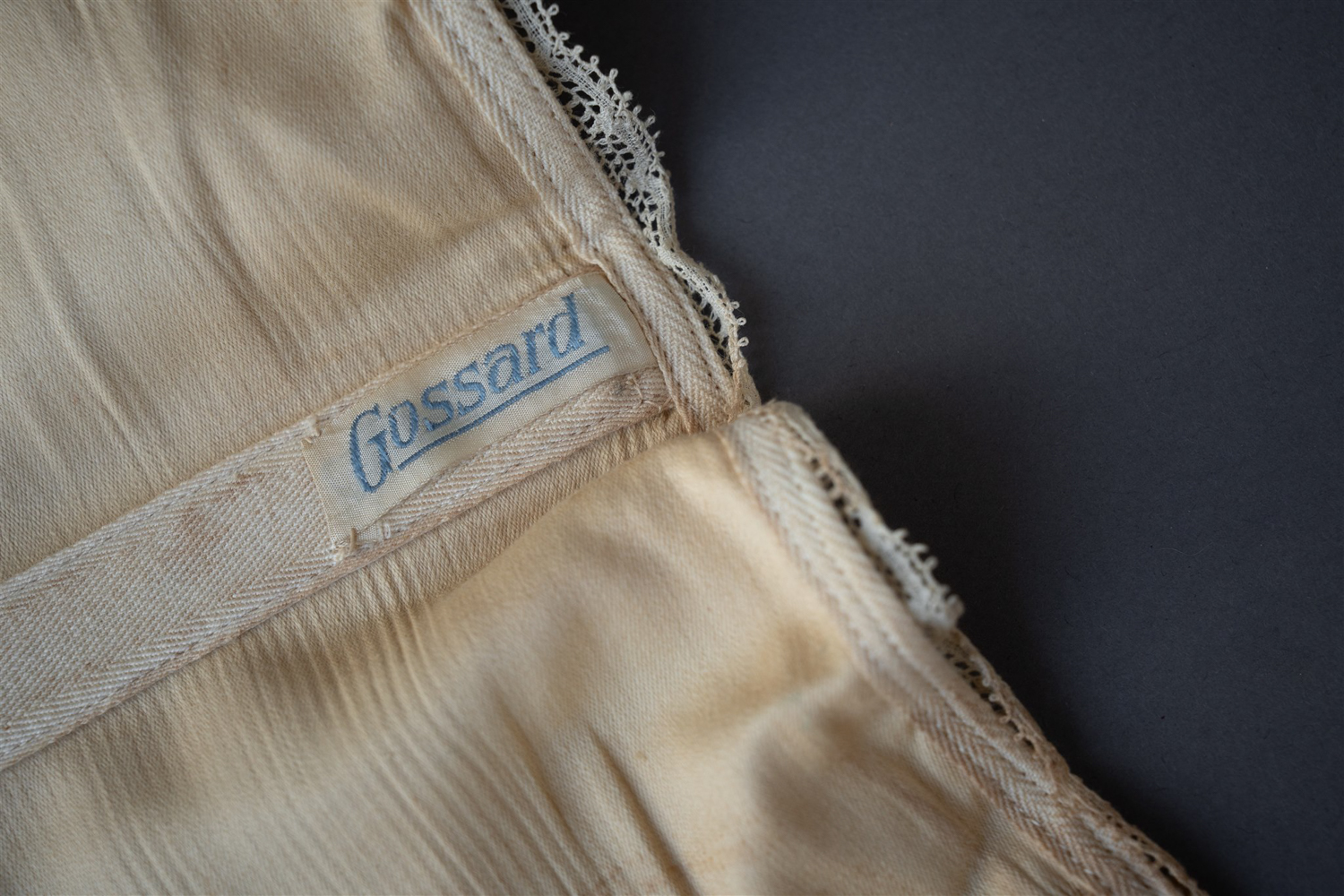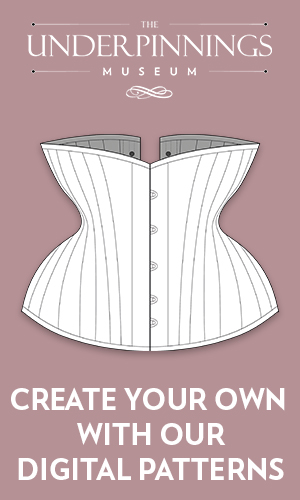Date: c. 1920s
Origin: USA
Fabric: Silk satin, woven cotton, machine-made lace, steel bones
Brand: Gossard
This 1920s front-lacing corset with lace trim is made by the American undergarment brand, Gossard. The corset is made of silk satin, coutil (a durable, tightly-woven fabric made of cotton), and adorned with machine-made lace as well as rosette details. The corset includes six suspender straps to be attached to a ladies stockings, which read “velvet grip.” The Underpinnings Museum collection features a circa 1910s advertisement for this brand of stocking supporters. This highly-feminized aesthetic falls in line with the leading European designers of the day, most notably Lucile (Lady Duff Gordan) in London, and Callot Soeurs in Paris, who, as progenitors of romantic couture fashion, took delight in creating dreamy clothing often trimmed with ribbons, intricate lace, and fabric flowers (often placed on the waistband). Traditionally feminine designers reigned in popularity for the first half of the 1920s alongside their more modernist counterparts. Silk and cotton undergarments were the most popular during the decade for women’s underwear, most often available in shades of white, ivory, or peach. This notably does not include any colors that could be considered “nude” for darker skinned women– reflecting the exclusionary nature of the early twentieth-century fashion industry.
The fashionable female silhouette for the 1920s transitioned from the more natural line of the late 1910s to a straight, columnar shape, ushered in by a new vogue for the masculine. A few highly publicized ‘modern’ young people did forgo both their corsets and suspenders, rolling down their stockings – however, this look was lampooned in contemporary caricatures of the rebellious modern woman, or flapper. For the majority of women in the 1920s, cylindrical elastic corsets provided necessary support and served to suppress natural feminine curves in the quest for fashionability. This front-lacing corset would have been used by the stylish woman to achieve the period’s ideal of narrow hips and flat abdomen.
Gossard was founded in Chicago, USA in 1901 by Henry Williamson Gossard. The company specialised in women’s corsetry and other garments. By the 1920s the label had expanded and opened offices in the UK. It pioneered corsets that laced in the front, such as this one, allowing for easier self-dressing. By the 1930s, Gossard had closed the American wing of its business and operated solely as a British company.
Gossard’s product offerings, like other brands of the early-to-mid twentieth century, were advertised through print editorials that often romanticized the product through a variety of intriguing visuals. A corsetry editorial from the 1940s in the Underpinnings Museum’s collection advertises Gossard alongside other leading undergarment manufacturers of the time, such as J. Roussel and Kestos.
In late 1968, the brand was granted the license for the ‘Wonderbra’, which it produced and manufactured for over two decades, before losing the rights in 1994. Gossard continues to make lingerie to this day, offering a selection of both fashion and solution styles in a wide size range.
From the collection of Karolina Laskowska.
Many thanks to Liv Elniski for the object description.
